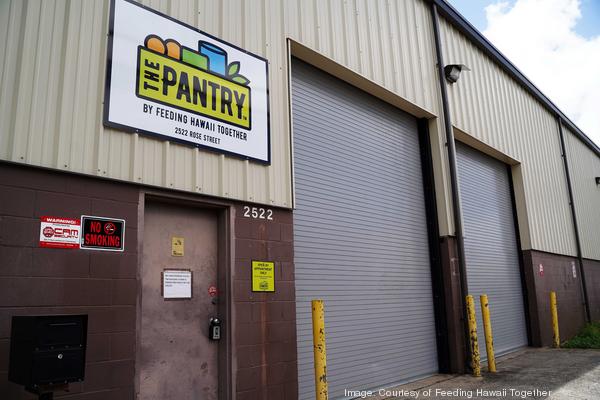Facing Food Insecurity Among Keiki

The Pantry is a food distribution center operated by Feeding Hawai’i Together, a Hawai’i-based 501(c)(3) nonprofit organization.
May 11, 2022
In 5th grade, I befriended a girl named Chloe. She was gentle and considerate with a knack for making people smile. Often during lunch, she would sit next to me and sneak things from my lunch tray- a cookie one day, a fruit cup the next. She regularly claimed to have “forgotten” her lunch, and I naively assumed she was just absentminded. Looking back, I realize this was my first encounter with food insecurity in the flesh, not just as a headline.
Food insecurity isn’t a thing of the past or an issue localized in developing nations; it’s a rampant problem in the United States currently plaguing millions of children like Chloe. According to a 2020 study from the US Department of Agriculture, 10.5% of all households in the US face food insecurity. Local food provider, The Pantry, found that 1 in 3 children in Hawaii struggle with hunger. We cannot underestimate the impact of food security.
Malnourished children experience stunted cognition during a crucial stage in their development, causing physical and learning delays with lifelong implications. This is alarming, yet the effects of food insecurity on children are often overlooked, meaning Chloe has to suffer every day alone. Hunger distracts her from her studies and robs her of the peace of mind that should be guaranteed for every child. Sadly, cases such as Chloe’s are commonplace both nationwide and in Hawaii; thousands more children suffer in silence.
Local food banks and other organizations are actively responding to this need, which was only exacerbated by the pandemic. In 2020 alone, the Hawaii Foodbank distributed 20 million pounds of food, up from 12 million the year before. Throughout the pandemic, establishments like The Pantry responded to dramatic increases in need, scaling up operations to continue supplying aid to allow families to worry less about nourishing children and focus instead on other critical challenges. The targeted approach of the Community Eligibility Provision assists children by providing free lunches, regardless of household income qualifications, to schools or districts in predominantly low-income areas where most food insecurity occurs.
Even though hunger no longer makes headline news and the subsiding pandemic caused need to decline, we must not neglect Hawaii’s hungry keiki. In most cases involving children, care providers are unemployed or make insufficient wages to support their families – something that won’t suddenly end. Are existing solutions enough to provide equal opportunities for all children?
Donating unopened, unexpired non-perishables, money, or volunteer time to local nonprofits and spreading awareness of programs like SNAP or WIC are good starts, yet too broad of an approach. Free and reduced lunch provides guaranteed assistance for children throughout the school week, yet attendance is a prerequisite. The current mandate for early education passed in 2014 requires children to attend kindergarten at 5 years old, but younger children are also largely affected by food insecurity, which is why this mandate needs to be extended to include preschool.
Though I hope for the best, I recognize that merely hoping won’t solve anything for Chloe nor the millions of children like her. There are various ways that we can help these children, such as testifying for a bill to extend mandatory attendance to preschool. It is essential we keep current and future generations informed and continue to fight against hunger. Although it’s not going to disappear, we can still change the lives of children like Chloe, starting today.

